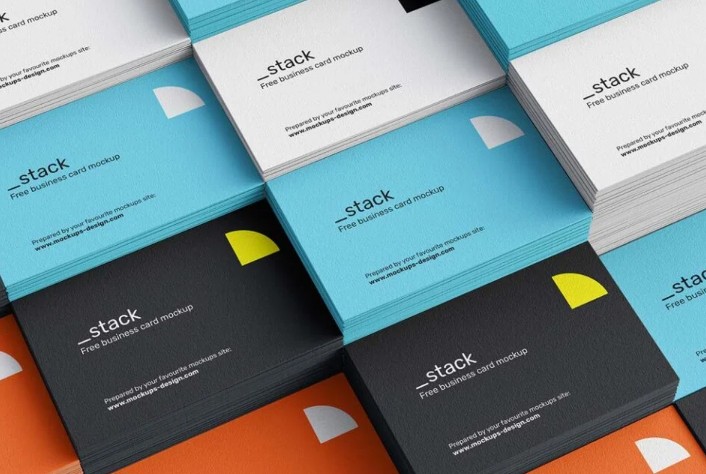Best Selling Products
Skills Needed to Become a Professional Graphic Designer
Nội dung
- 1.Basic knowledge of design
- 2. Skills in using design software
- 2.1 Master the basic tools
- 2.2 Update new tools
- 3. Creative thinking and aesthetic ability
- 4. Communication and presentation skills
- 5. Ability to manage time and work to deadlines
- 5.1 Problem-solving thinking
- 5.2 Update trends and learn continuously
- 6. Multidisciplinary skills: UI/UX, Motion, Branding
- 6.1 Professionalism and professional responsibility
- 6.2 Practice continuously to improve skills
- 7. Build a professional portfolio
- 8. Industry networking
- 8.1 Business skills – a plus for a freelance career
- 8.2 Understanding users and guiding design
- 9. Common mistakes when entering the graphic design industry
- 9.1 Prioritize “looking good” over “solving problems”
- 9.2 New skill trends in modern design industry
- 9.3 Design Thinking for Cross-Platform
- 10. Conclusion
Discover the essential skills that will help you become a professional graphic designer. From aesthetic thinking and software usage to communication and trend-keeping skills.

Graphic design is not just a combination of images and letters, but also a journey to transform ideas into powerful communication products. To firmly establish oneself on the path to becoming a professional designer, one needs to possess many important skills – both technical and creative. These skills not only help create beautiful products, but also enhance the brand value for customers, thereby affirming one’s position in the industry.
1.Basic knowledge of design
Every professional journey begins with a solid foundation. In graphic design, this includes understanding layout, color theory, typography, visual hierarchy, and balance. This is the framework that helps designers make the right decisions when implementing any product, from posters, banners to website interfaces.
Mastering this knowledge helps design products convey effectively and create a strong impression on viewers.
2. Skills in using design software
Design software skills are important in many fields. Especially in the creative, engineering and media industries.
.jpg)
2.1 Master the basic tools
A professional graphic designer needs to be proficient in software such as Adobe Photoshop , Illustrator , InDesign , or Figma . Each tool has its own role: Photoshop serves image processing, Illustrator creates sharp vectors, InDesign specializes in publishing layout, and Figma supports UI/UX interface design.
To achieve high efficiency, users need to master the basic and advanced features of the software, and constantly update new trends to meet the increasingly diverse demands of the market. Practicing this skill is not only a competitive advantage but also an important factor for career development in the modern working environment.
2.2 Update new tools
Technology is constantly changing, and keeping up with new tools will help speed up your workflow and optimize your design efficiency. In addition to the traditional Adobe suite, many designers today also use complementary applications such as Canva, Procreate, or AI-assisted design.
Improving your design software skills not only helps optimize your workflow but also opens up many opportunities for creativity and development in the design field. To achieve optimal efficiency, users need to regularly update new tools, grasp modern technology trends and apply them in practice. This is not only a way to improve product quality but also a method to increase competitiveness and affirm your position in the industry. Investing time and effort in learning and testing advanced design software will bring long-term benefits, while helping you become a more professional and flexible design expert in an ever-changing working environment.
3. Creative thinking and aesthetic ability
Creative thinking is not an inborn gift, but a skill that is cultivated over time. Designers need to know how to observe, discover new ideas from the life around them and transform them into unique visual solutions. Aesthetic ability helps to evaluate and adjust the product to suit each specific project.
Developing visual and spatial thinking, as well as the ability to tell a story through images, is an important element in the branding process.
4. Communication and presentation skills
In a professional environment, a designer does not work alone. The ability to communicate effectively with clients, colleagues and relevant departments helps ensure information is clearly communicated, avoids misunderstandings and saves editing time.
.jpg)
Communication and presentation skills play an important role in building relationships, sharing information and persuading others in a professional work environment. Presentation skills help designers clearly express aesthetic decisions, explain design logic, and thereby build trust with customers. The ability to receive and respond to feedback is also an important factor in improving the quality of the final product.
To improve this skill, it is necessary to focus on active listening, using appropriate body language and presenting ideas clearly and coherently. In addition, carefully preparing the content, understanding the audience and using effective support tools also contribute to improving the quality of the presentation. A person with good communication skills not only creates a positive impression but also promotes cooperation and success at work.
5. Ability to manage time and work to deadlines
Time is of the essence in the creative industry. Professional designers often work on multiple projects at once, each with tight deadlines and varying requirements. Effective time management skills ensure quality output without missing deadlines.
Being proactive in planning and prioritizing work will help reduce stress and create a scientific work process.
5.1 Problem-solving thinking
Design is not just about making things look good, it is also about solving visual, communication or technical problems. Critical thinking helps designers ask the right questions, look at problems from multiple angles and come up with effective solutions. From dealing with printing color errors to finding the best way to convey a message, problem solving is the key to any successful design product.
5.2 Update trends and learn continuously
The design industry is constantly changing with trends in aesthetics, technology, and user behavior. A professional designer cannot stand still. Keeping up with new trends, AI technology, motion design, or emerging UX... helps to stay competitive and creative.
Continuously learning from the community, participating in workshops, specialized courses or design competitions will broaden your thinking and improve your skills.
6. Multidisciplinary skills: UI/UX, Motion, Branding
The modern designer is no longer limited to traditional print or advertising. Expanding into areas such as user interface design (UI/UX), motion graphics, or branding will create a distinct competitive advantage in the job market.
Flexibility in skills and adaptability to many types of products makes designers multi-taskers, suitable for any creative environment.
6.1 Professionalism and professional responsibility
Besides professional skills, work attitude plays a decisive role in long-term success. A professional designer is always responsible for his product, respects deadlines, is honest in work and maintains professional ethics.
A spirit of progress, learning from failure, and the ability to collaborate are factors that contribute to building a strong personal brand.
6.2 Practice continuously to improve skills
No matter how much theory you learn, without practice, skills will still be difficult to develop. Continuous practice helps designers understand their strengths and weaknesses, thereby improving the quality of their designs over time.
Create personal project
Working on personal projects like designing posters for virtual events, creating mock-up brand identities, or redesigning familiar website interfaces… is a great way to practice, experiment, and enrich your portfolio. It’s also an opportunity to express your creative personality without being constrained by client requirements.
Learn from feedback
Posting your work on industry forums, design community groups, or participating in critique sessions will help you get real-world feedback. It’s a valuable learning resource to look at issues from different perspectives.
7. Build a professional portfolio
Portfolio is the “face of the brand” of a designer. A portfolio that is clearly presented, beautiful and has a personal stamp will create a good impression on employers or clients.
Required elements:
Projects stand out with short but comprehensive descriptions.
High quality product images with real-world usage scenarios (mockups).
Personal information, contact information, professional social network links (Behance, Dribbble, LinkedIn...).
Can be accompanied by detailed case studies with typical projects.
A professional portfolio is not only a place to showcase skills but also demonstrates the design thinking process and seriousness about the profession.
Communication and presentation skills play an important role in building a professional portfolio, helping you make a strong impression on employers or partners. To be effective, you need to present your ideas clearly, logically and attractively, and know how to listen and respond subtly. In addition, choosing appropriate content, visual design and using professional language will help your portfolio become a tool to optimally demonstrate your abilities and personal values. Invest time and effort to perfect this skill, because it not only enhances your ability to persuade but also opens up many opportunities for career development.
8. Industry networking
A good designer is sometimes not as successful as a designer who knows how to network. Building relationships with the design community, potential partners, agencies or creative studios is an important part of expanding your career opportunities.
.jpg)
Communities like AIGA, Designervn, Facebook groups or Meetups, Workshops are ideal places to learn, share and access job opportunities, collaboration or mentorship. The relationships built here can lead to interesting projects or unexpected job offers.
8.1 Business skills – a plus for a freelance career
Many designers today choose to freelance or open their own studio. To be successful in this role, in addition to design skills, you need to equip yourself with basic business skills such as:
Price your products/services appropriately.
Sign a clear contract.
Professional communication via email, online meetings.
Personal and project finance management.
Knowing how to “sell” ideas, protect your rights, handle unexpected situations and build your personal brand are important conditions for freelancers to survive and develop sustainably.
8.2 Understanding users and guiding design
Ultimately, a professional designer works not just for the client, but also for the end user. Understanding the behavior, needs, and expectations of the target audience helps to come up with a more intuitive and effective solution.
Apply user-centered design thinking
UX (User Experience) thinking is becoming more and more popular, even in print design or branding. When designers know how to put themselves in the user's shoes, they will create products that are beautiful, easy to understand, and provide a positive experience.
Advice for beginners
Entering the field of graphic design brings with it a range of emotions: excitement, skepticism, and even anxiety. To avoid feeling overwhelmed by the myriad of skills you need to learn, it’s important to have a clear path forward and prioritize your priorities.
Let's start with the basics
Before learning advanced software or complex design styles, make sure you master:
Visual Principle
Basic layout
Color and contrast
Typography and practical applications
A solid foundation will help you go far without having to "break and rebuild" every time you want to develop further.
Learn through real projects instead of just theory
Setting up your own simulation tasks such as: making a banner for a fashion shop, designing a name card for a photo studio, or creating a social network template for a new brand... is a way to help you progress quickly, both training your problem-solving thinking and practicing software skills.
Accept mistakes and learn from them
In the early years, your products may not be beautiful, not technically correct, or not yet perfect. This is completely normal. The most important thing is to keep yourself in the spirit of continuous learning, knowing how to accept feedback, and not being afraid of change.
9. Common mistakes when entering the graphic design industry
Even the most talented artists can stumble in the beginning. Identifying common mistakes can save you time and avoid unnecessary mistakes.
9.1 Prioritize “looking good” over “solving problems”
Many beginners focus on making their designs look fancy and flashy – forgetting that graphic design is all about communicating information clearly and effectively . A beautiful design that doesn’t convey the right message or misleads users is still a failure.
9.2 New skill trends in modern design industry
The world of graphic design is constantly changing with technology, culture, and consumer behavior. To be a “pro” not only now but also in the future, you need to update yourself with new skills that are in demand.
9.3 Design Thinking for Cross-Platform
In the digital age, a design often does not stay static on the print or desktop. It needs to adapt flexibly to many platforms: from phone screens, TVs to smartwatches, social networks, e-commerce sites. Knowing how to design responsively ( optimizing for size and platform) is an indispensable skill.
Understanding new technology (AI, AR, no-code)
AI supports design : Tools like Adobe Firefly, Midjourney, Figma AI... are changing the way designers work. If you know how to exploit them, AI will help you speed up your process and expand your creativity.
AR/VR : Augmented reality applications in branding and user experience are creating new demands in 3D design and animation.
No-code tools : Many designers now know how to use Webflow, Framer to build landing pages or digital product prototypes without needing a programmer.
10. Conclusion
Becoming a professional graphic designer is not simply about learning how to use software or drawing well. It is a combination of professional skills, creative thinking, communication, time management and a spirit of continuous learning. When you have all of these elements, you will not only be on a solid career path but also have the ability to create real value for society through design. Start today, invest in core skills and build a sustainable development roadmap.












































